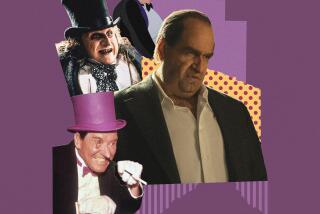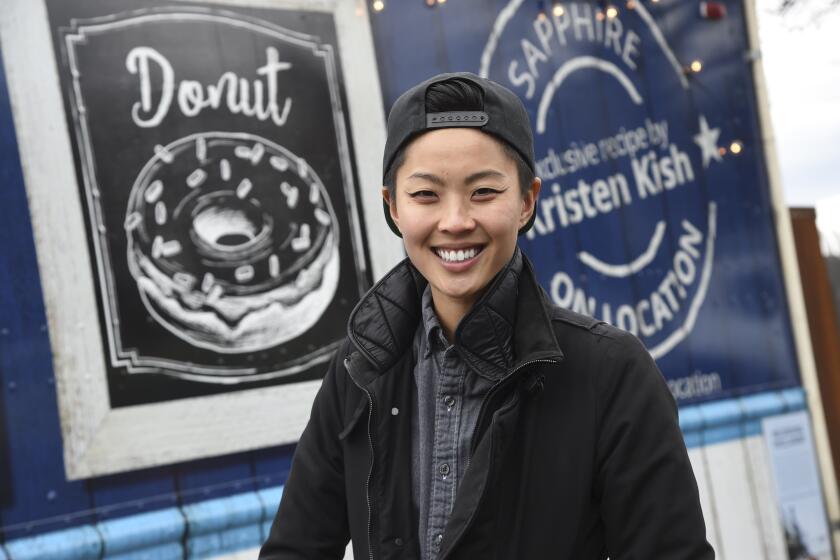A new Pooh? Oh bother
- Share via
As one who can see a cloud in any silver lining, I have a soft spot for Winnie-the-Pooh’s melancholy friend, Eeyore. So I wasn’t surprised to find myself agreeing with the donkey’s gloomy prediction in the introduction to author David Benedictus’ new book of Pooh stories, “Return to the Hundred Acre Wood,” which was released this week. “He’ll get it wrong,” Eeyore says of the writer. “See if he doesn’t.”
This is the first authorized sequel to A.A. Milne’s tales of the beloved bear, and it was clearly penned with all the care a conscientious and talented author could muster. And yet, even if Benedictus got it right, with great attention to the nuances that made us love Milne’s original stories from the 1920s, he got it wrong. The guileless Pooh and his pals were just fine as we left them decades ago in the enchanted forest, where “a little boy and his Bear will always be playing.”
Literature belongs to its era and can’t simply be added to decades later, especially after the author has died. Call me cranky, but I don’t think we need another Pooh book. And we certainly don’t need a new character like the otter, Lottie, that Benedictus has added, even if she helps address a gender imbalance in the Hundred Acre Wood. Why couldn’t Benedictus have made the haughty otter the hero of her own book, giving future generations of children a new story, while leaving intact the Pooh tales their parents and grandparents treasured?
There is an argument, of course, that the offense to Milne’s characters was committed long ago. After his death in 1956, Milne’s widow sold the rights to the Pooh characters to the Walt Disney Co., which went on to produce bastardized Pooh movies and every imaginable piece of merchandise, much of it bearing little resemblance to Milne’s spirit or to Ernest H. Shepard’s drawings in “Winnie-the-Pooh” and “The House At Pooh Corner,” the only two books in the original series.
Imitation being the highest compliment, sequels and prequels are considered by many to be an homage. They are almost de rigueur, as Sherlock Holmes and Mr. Darcy know only too well. But to my mind there is a difference between this addition to the Pooh stories and something like Alice Randall’s “The Wind Done Gone,” which retold the “Gone With the Wind” story through the eyes of a slave, or Seth Grahame-Smith’s Austen parody, “Pride and Prejudice and Zombies.” Parody and reinvention are one thing; this, however, is but another example of the Hollywood malaise, an attempt to take a profitable brand and add new products, barely differentiating between the new and the old. Dutton Children’s Books has issued hardback volumes of the originals and the sequel with nearly identical designs likely to confuse kids -- or the adults who are buying.
“Who cares?” you ask. “What if the book is good?” Well, here’s one reason. Imagine if Milne had dedicated himself to a sequel to Lewis Carroll’s “Alice’s Adventures in Wonderland” because it was sure to sell. We never would have known Pooh, Piglet and Eeyore, and would have been poorer for it.
The genius of the Pooh classics is that Milne invented a magical place and unique characters, and he told us their stories in his own tiddley-pom voice -- stories about a poetry-loving bear who thinks Grand Thoughts about Nothing when he can get his mind off honey. Milne brought us Eeyore, whose most positive offering is that “we haven’t had an earthquake lately.” I know what to expect from them, in part because they were playing out Milne’s vision of who they were and how they would behave. In the new book, a different author controls their actions. Pooh is a tad more resourceful. And Eeyore is downright sociable, playing cricket and participating in the Harvest Festival. It’s unsettling. How’s a kid reading that to know what you mean when you call someone Eeyore?
And then there are the drawings. Shepard’s Pooh is whimsical and muddled; his Christopher Robin is a boy of Britain between the wars, with his pageboy haircut, smock-like shirts and rain slicker. Shepard’s lovely watercolor of Eeyore floating on his back will break your heart. And Piglet’s anxiety is perfectly captured. In the new book, illustrator Mark Burgess gives us an honest effort to re-create the characters. They’re sweet. They’re not the same.
At the end of the new book, Piglet murmurs philosophically, “I wonder why things have to change?” The ever-hopeful Pooh responds, “It gives them a chance to get better.”
Sometimes, perhaps. But in this case, I’m with Piglet.
More to Read
Sign up for our Book Club newsletter
Get the latest news, events and more from the Los Angeles Times Book Club, and help us get L.A. reading and talking.
You may occasionally receive promotional content from the Los Angeles Times.








